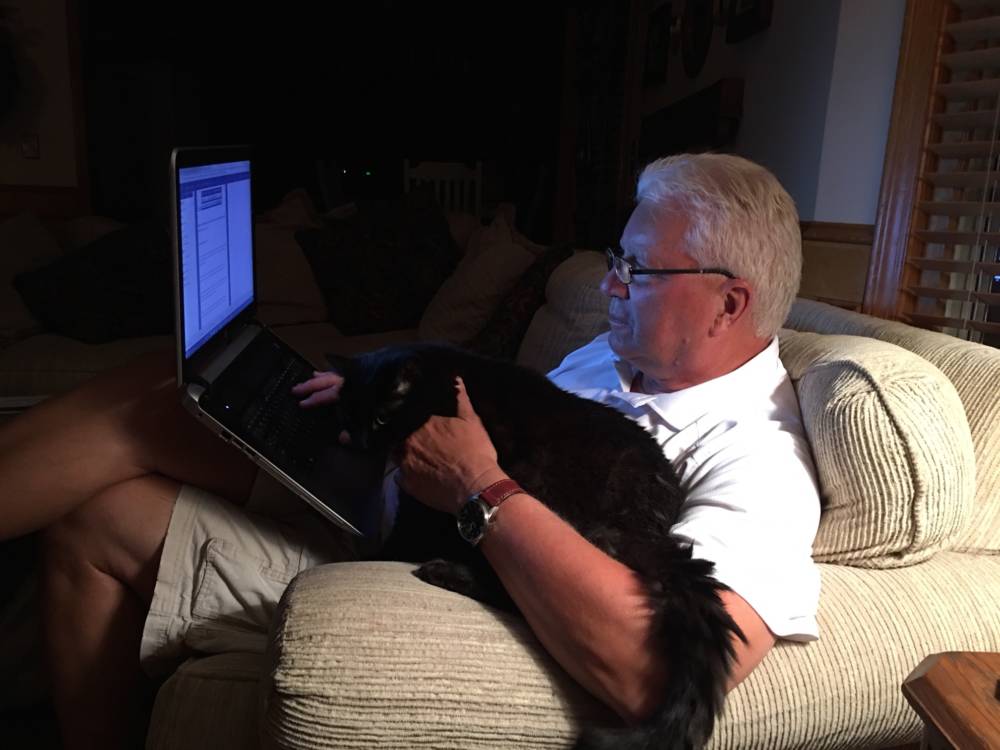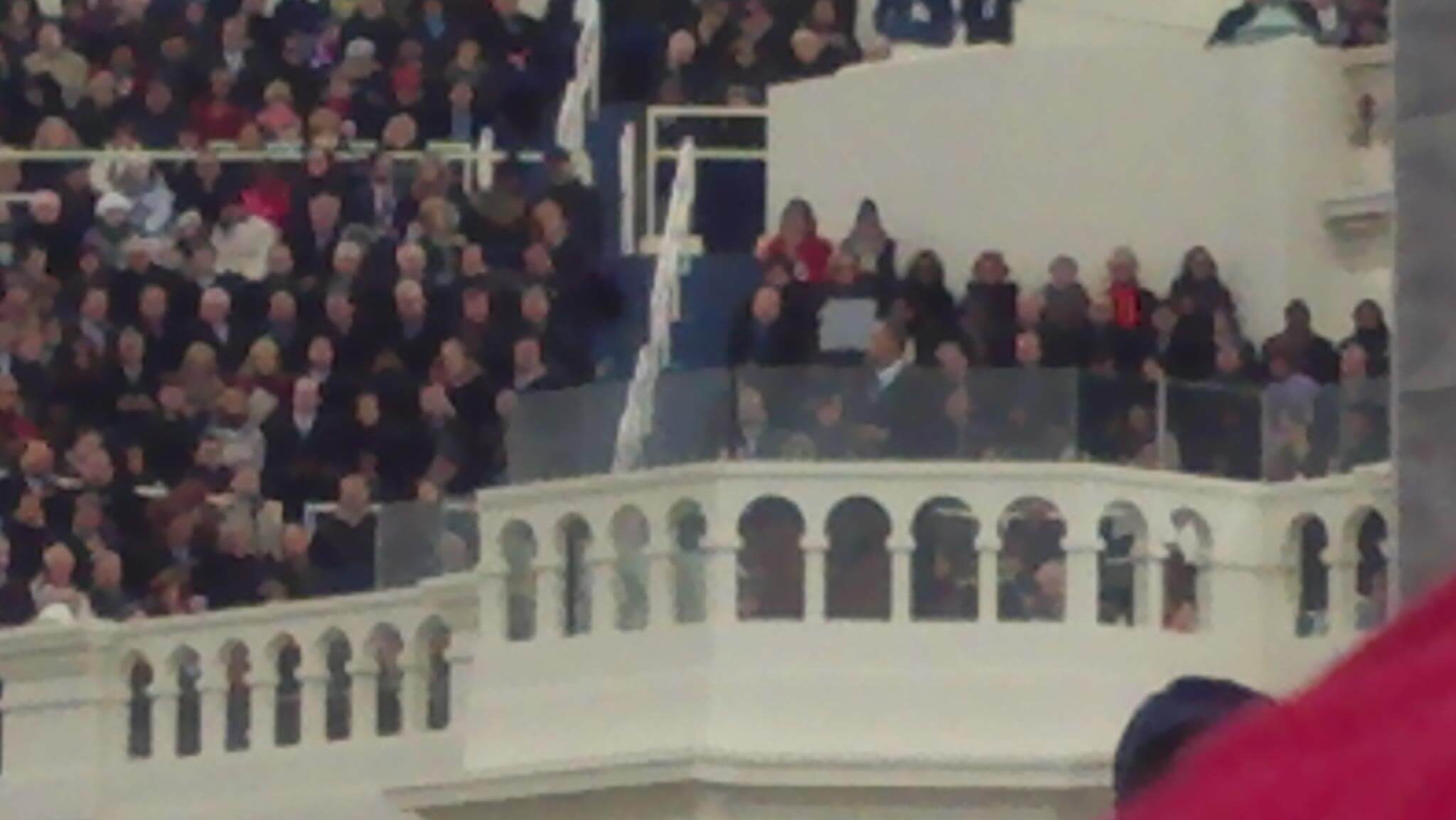Most evenings, Paul Stevens starts pulling things together on his laptop from the couch in his Lenexa, Kansas home. He digs into files where he’s saved stories his subscribers sent in, picks a few for the following day, and tunes in and out of whatever’s on TV.
The next morning, Stevens gets up and, as he did for most of his professional life, starts collecting the news. Except now, he’s writing a daily newsletter.
It’s called “Connecting.” It’s independent of the AP. It’s run by a man who started with and retired from that organization. And, for Stevens and his subscribers, it’s a way to stay connected to the news and the newsmakers when their time in the newsroom ends.
‘Click here for the sound of the teletype’
Every morning, Stevens pulls from The Associated Press’ “Today in History” feature, gathers a weekly feed of top enterprise stories from AP bureaus around the world, checks industry sites (including this one), gathers birthdays, weddings, news of grandchildren and obituaries.
Then, if his clever cat Felix doesn’t manage to delete the whole thing with the tap of a paw, Stevens sends his newsletter to about 1,100 subscribers.
Stevens began his career with The Associated Press in the Albany, New York, bureau in 1973. But his brushes with journalism started much earlier.
Stevens’ father, Walter Stevens, worked for The Messenger in Fort Dodge, Iowa for more than 50 years. Stevens’ own career took him to St. Louis, Wichita, Albuquerque and Indianapolis for the next decade. In 1984, he became AP bureau chief for Missouri and Kansas. In 2003, Stevens was named one of four regional vice presidents for the AP, overseeing 13 states in the Midwest. He worked in that position until 2009, when he took a buyout and retired.
At the time, a man who worked in corporate communications with the AP sent out a monthly newsletter. But when he retired, that newsletter stopped. In 2012, Stevens decided to start it up again.
He figures about 600 of his subscribers are retirees or former AP employees. About 300 currently work for the AP, and the rest are friends in the industry. (This reporter is also a subscriber.)
He isn’t the only journalist to build a place for former colleagues, either. Journalists who’ve left the industry to figure out their Plan B, and those who are considering it, gather in a Facebook group. Former Patch journalists have a place on Facebook, too.
Stevens adds new subscribers weekly, but the best feedback came a few months ago, when he put out a note to his readers. He pays $40 per month to send the newsletter through Constant Contact. A friend who archives each issue pays a couple hundred dollars a year for a domain name. Stevens let his subscribers know that if they wanted to help pay for the newsletter, they could.
“I got so much response,” Stevens said, “that it’s covered for the next 10 years.”
‘It’s like getting a history lesson in your email in-box six days a week’
At 100, George Bria is the second-oldest living AP retiree. He’s been getting some version of “Connecting” since the 1980s. Back then, it was called “Cleartime” and came via the U.S. Postal Service once a month.
“The name is quite poetic, and I wish it had been kept,” Bria said in an email. “Usually during the middle of the night, there were periods when the wire was idle and the traffic operator sent the word, ‘clear,'” Bria said in an email. “So, figuratively, it was time for our reminiscences.”
For Bria, who reads the newsletter on his desktop each morning, “Connecting” is both a way to keep up with colleagues and a way to understand the current state of the industry.
Peggy Walsh worked with Stevens as a fellow bureau chief until she left in 1990 to work as executive editor of The New York Times News Service. She usually reads the daily newsletter on her phone.
“For former AP staffers, it offers an extended family,” she said in an email, “many of whom I haven’t seen in 25 years, some of whom I ‘knew’ but never met.”
For Walsh, who is now retired, “Connecting” introduces her to new people, offers a place to honor colleagues they’ve lost and a place to share lessons from a different time, including “some of the things women faced as news executives in the ‘good old days!'”
Chris Carola, a reporter in the AP’s Albany bureau, catches up with the newsletters during his break times or later at home on his laptop. For current AP staffers, the newsletter offers a look into the stories behind both the major and the daily news.
“It’s like getting a history lesson in your email inbox six days a week,” he said, “written by the people who were there.”
The daily rhythm
For the collector and compiler of those daily history lessons, the newsletter is something of a passion project. Stevens treasured his career in the AP, he said, and all the people he met while working there. Publishing the newsletter feels, to him, like a way to give something back after a 36-year-career.
It also keeps him active. But perhaps more significantly, it offers current and former journalists a place to continue their relationship, “which is something that I think journalists miss very much when they stop doing it full-time,” said Valerie Komor, director of AP’s corporate archives.
The AP archives the newsletter and often shares story ideas, sources and contacts with Stevens. And in addition to Stevens’ work, she said, it relies on the efforts and loyalty of the AP and non-AP community he’s built.
Maybe they miss the daily pulse of the news, or the company of other journalists, or the sense of purpose this industry provides for many. Maybe they just miss being among the first to know what’s happening in the news. But Stevens, at least, has found a way to continue doing what he loves while offering his peers a place to stay involved.
“I think he would be the first to say that ink runs in his veins,” Komor said. “He loves the daily output. He loved it while he was AP, and having been born into that newspaper world, he loves that kind of rhythm.”
Stevens only takes one day a week off, by the way. There’s no newsletter on Sunday. But by Sunday night, he’s back to work.

Paul Stevens and Felix the cat work on the newsletter. (Photo courtesy Paul Stevens)







